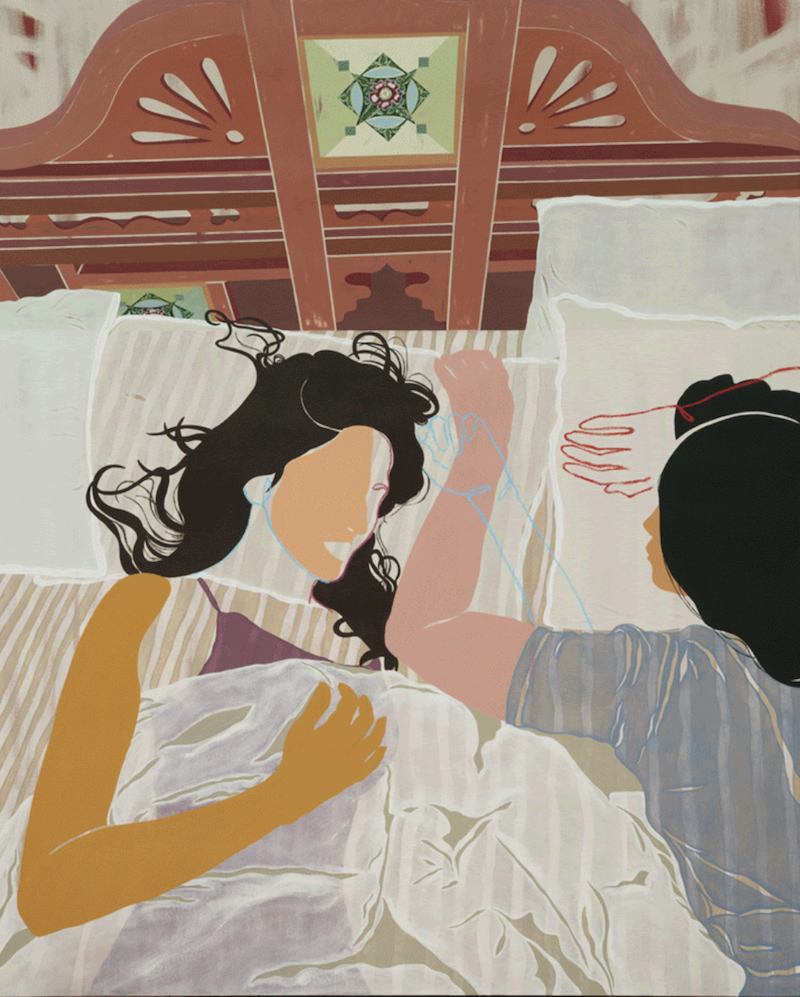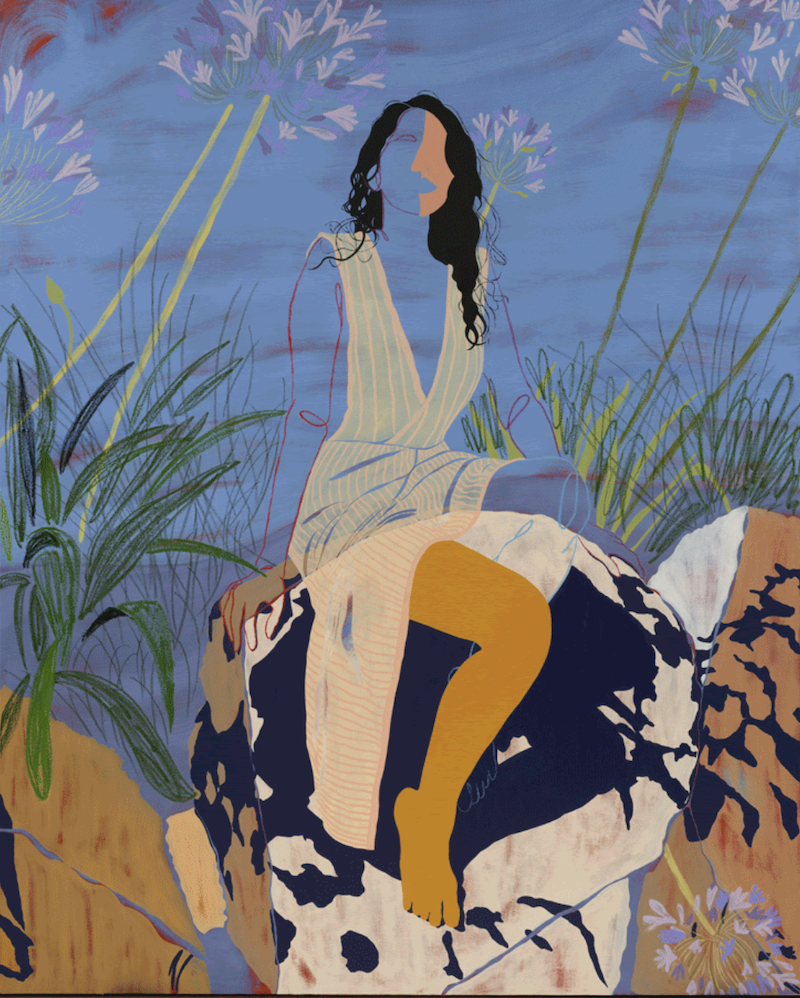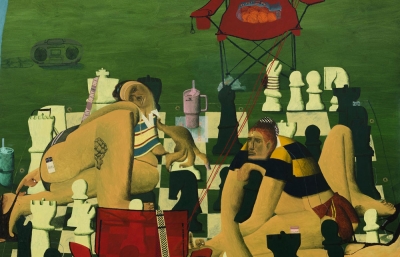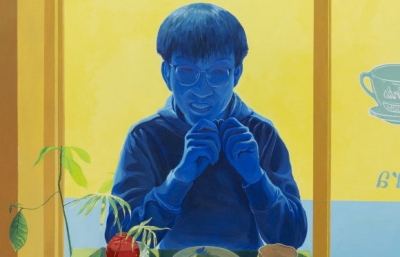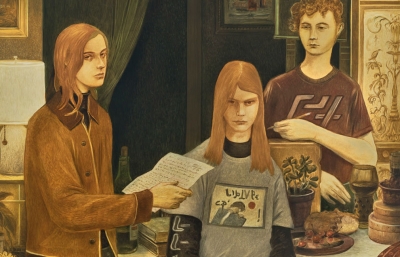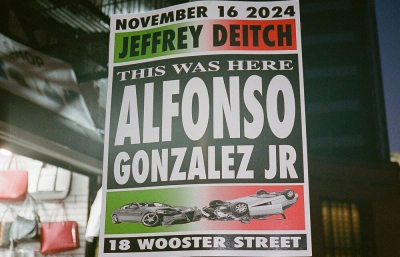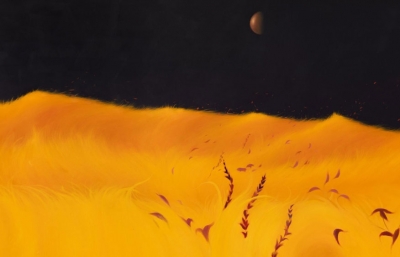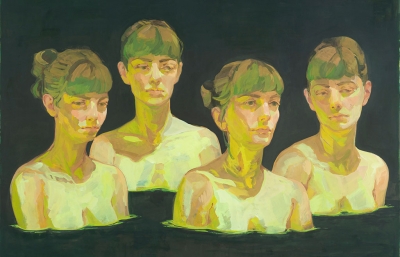Yossi Milo is pleased to announce A House Called Tomorrow, Anoushka Mirchandani’s (b. 1988; Pune, India) debut solo exhibition in New York and first with the gallery. A House Called Tomorrow will be on view through Saturday, January 11, 2025.
A House Called Tomorrow, which shares its title with a poem by Alberto Rios, is presented at a pivotal moment for Mirchandani. The exhibition coincides with the artist’s relocation to New York after more than a decade in California—a move that marks the beginning of a transient chapter in her life and parallels her experiences of immigrating from India as a young adult. Using autobiography as a window, Mirchandani negotiates how architectures of space, self-image, and relationships evolve across shifting socio-political landscapes. The artist manifests this in paintings that depict herself and her loved ones, and draw connections between a deep familial archive and her life in the present.
In A House Called Tomorrow, scenes from the artist’s life in California and India appear alongside public parks in New York City; other works in the exhibition venture abroad to villages in Italy and the dense tropical forests of Brazil. Through these hyperlocal landscapes of personal importance, Mirchandani summons a psychic space that traverses land and time. This interior world is motivated by tumultuous feelings of nostalgia and loss that give way to hope, comfort, and agency. Previously, Mirchandani’s subjects appeared alone in solitary explorations of the self— but, as the artist’s horizons have grown through her recent move and subsequent travels, so have the roles of her subjects. Joining one another in community on the canvas for the first time in years, figures in Mirchandani’s new works expand social notions of love, intimacy, and care in the company of one another. Abstracted bodies blend and merge into natural land masses and architectural space, embodying a cyclical process of discovery and remembrance. In Mirchandani’s raw jungle works, she takes on positions of sensuality and strength in self-portraits that confront the viewer head-on, one-on-one in the wilderness. In doing so, she reclaims power from the trope of the “wild,” embracing herself through forays into the unknown.
Mirchandani’s figurative interplays of line and shape alternate between sinuous outlines and solid forms, which create a pictorial parallel to social notions of code-switching in language and affect. The artist’s figures build their own emotional space, one where place-making comes as the result of an intuitive process rather than a physical one.
Among the new works included in A House Called Tomorrow is “You see, I've forgotten / if they're brown or they're blue” (2024), in which Mirchandani brings these notions of interpersonal connection and pictorial metaphor to the fore. The work’s two subjects hold hands, seated in an interior space. The central figure’s body weaves in and out of transparency, and the environment comes in and out of focus through her. The environment can be viewed through her like a lens, and she conversely exists as an inherent force that shapes it. Mirchandani makes a visual metaphor of this conversation between the individual and her recollection, rendering the two through one another, and allowing viewers to see both simultaneously. These changes in approach mirror the situationally evident and hidden parts of her subjects, creating a representation of the internal experiences of alienation, belonging, and remembrance.
The shifting conceptual and emotional undercurrents in Mirchandani’s work arise from her varying memories of relocation. The artist’s move to New York echoes stories of the many migrations—both voluntary and involuntary—from her matrilineal heritage, and relates to experiences of motion and transience broadly. In 1947, Mirchandani’s grandparents faced their own forced relocation during the partition of India, when they fled to India from the region that eventually became Pakistan. These recurring narratives motivate the artist’s investigations into the constant loss and reclamation of the self, and into resilience, adaptation, and agency. A House Called Tomorrow raises the stakes of Mirchandani’s search for community and for a literal and figurative sense of stability in her own increasingly migratory existence. In bridging seemingly disparate worlds, Mirchandani finds a decentralized form of place-making that transcends geography to welcome new ways of becoming.





